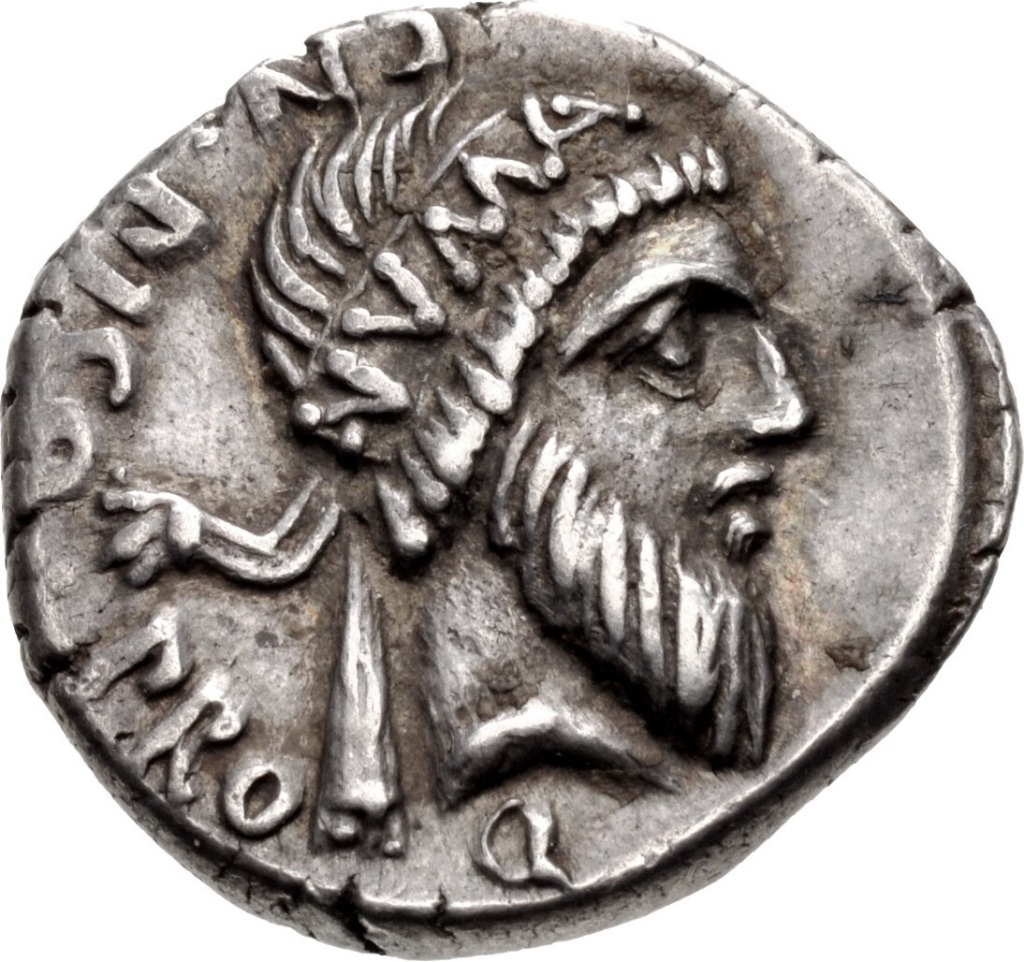From law and politics to architecture and civil engineering, literature and the arts, and every language we speak today, the Roman Empire’s influence is still felt. The Roman Empire, which is still one of the most influential ancient empires in history, was a post-Republican state of ancient Rome.
The city of Rome served as its principal hub, establishing itself in 27 BCE following the dissolution of the Roman Republic. It endured until the final dissolution of the Western empire in the 5th century CE. This period is commonly regarded as the period during which the Romans exercised authority following the assumption of sole rulership by Octavian under the Principate in 31 BC.
Today, some descendants of the Roman Empire can be found in Europe, North Africa, and Western Asia. The fact that some of these regions were once ruled by emperors is a testament to this. Before I begin, the history of the Roman Empire would not be complete without examining the fate of its founding fathers, Romulus and Remus. According to Roman mythology, Romulus and Remus were described as twin brothers and their story tells the tale of events that led to the establishment of Rome and later on, the Roman Empire.
The Legend of King Romulus and Remus
Since most of the world’s history is covered in myths and folktales, it’s not surprising that Rome and its founders were also involved in these stories. Regardless of whether these accounts are based on factual evidence or fiction, they undoubtedly provide a crucial piece of information regarding the origins of the Roman Empire that has been largely unknown to some. To provide an engaging introduction to Roman history, I would employ mythical origins to tell the tale of the renowned forefathers of the Roman Empire.
The first thing to understand is that the mythical origins of Rome are believed to have originated in the Latin city of Alba Longa. Alba Longa was an ancient city in Central Italy near Lake Albano in the Alban Hills. Some historians believe this city was the originator and leader of the Latin League, before it was wiped out by the Romans in the middle of the 7th century BC, leading its inhabitants to flee to Rome. It was also rumoured that this city was the location where the founding fathers of the Roman Empire, Romulus and Remus, along with their priestess mother, Rhea Silvia, were convicted of capital punishment by their great uncles.
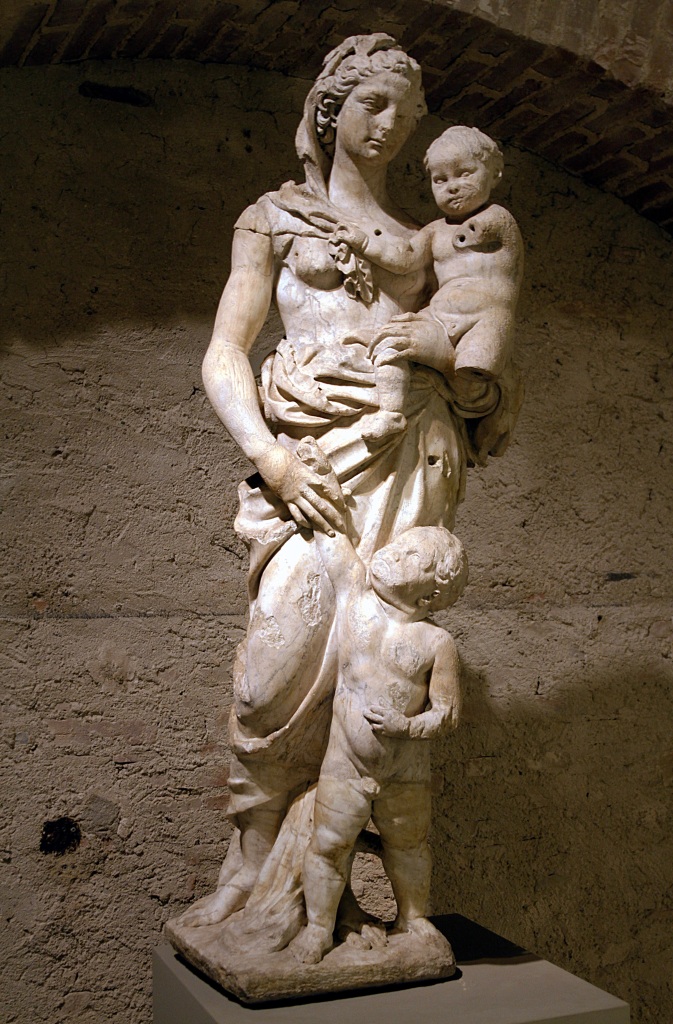
According to the Roman historian Titus Livius (Livy), Romulus and Remus were the sons of Rhea Silvia, who was said to have been conceived by Mars, the Roman god of war. The twins’ maternal grandfather was Numitor, the legitimate king of Alba Longa, through whom they were heirs to both the Trojan hero Aeneas and Latinus, the ruler of Latium.
Furthermore, according to another ancient Greek philosopher named Plutarch, Numitor’s younger brother, Amulius, took over the throne from Numitor and became king. To prevent any of Numitor’s relatives from retaking the throne, Amulius executed Numitor’s sons. The story also says that when Numitor’s brother Amulius became king by force, he made Rhea Silvia become a Vestal Virgin, a person who worships the goddess Vesta.

Given that Vestal Virgins are expected to become celibate, this would ensure that the lineage of Numitor would not bear any descendants. This ritual rite prevented Rhea Silvia from having children for a while. As time passed, Rhea gave birth to twins, which was a surprise to many.
According to Rhea’s account, Mars, the god of war, impregnated her. She explained that Mars attempted to rape her as she was heading to a sacred forest to get water for the temple. She then attempted to escape from him by jumping into a cave, but was unsuccessful. Following her pregnancy with her twins, Mars promised that her children would be great. The claims of her children’s paternity were later doubted by the Roman historian, Titus Livius.
For Vestals, the punishment for having sex was death. When Amulius discovered that Rhea Silvia was pregnant, he imprisoned her, as a punishment for a Vestal Virgin who failed to maintain her virginity. Amulius furthermore instructed a servant to execute her twins by drowning them in the Tiber River. The servant, however, displayed mercy by releasing them onto the Tiber River, in a trough that overflowed, resulting in the infants being deposited in a pool situated near the bank.
The trough in which they were placed sailed down the river and landed next to the Ficus ruminalis, a revered fig tree from historical eras. It was in this location that a she-wolf and a woodpecker, both considered sacred to Mars, suckled and fed them until the herdsman Faustulus found them. Due to the intervention of Amulius daughter, Rhea Silvia was spared from death. According to the writings of the Roman poet Ovid, Rhea Silvia ultimately threw herself into the Tiber river.
Read also: Maurya Empire: The most powerful civilization to come out of India
Years went by and Faustulus, who was a Herdsman and his wife, Acca Larentia, raised the twins, and named them Romulus and Remus. They later became leaders of a group of young people who were adventurous. Romulus and Remus emerged from their childhood and led a band of warriors in their quest to overthrow Amulius. The overthrow proved to be a success, as the twins ordered his execution and restored Numitor as king of Alba Longa in the year 752 BCE.
Hoping to establish their settlement, Romulus finally erected a barrier around the Palatine Hill, the spot he had picked for the founding of Rome. To find the best place for their new city, the twins walked around seven hills (Aventine, Celio, Capitol, Esquiline, Palatine, Quirinal, and Viminal). Remus aspired to establish the city on the Aventine Hill, whereas Romulus favoured the Palatine Hill. They decided to consult augury, a Greco-Roman religion practice of observing the behaviour of birds, to receive omens.
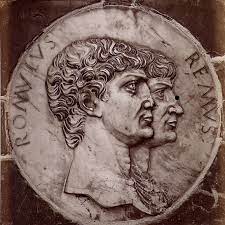
Remus claimed to have seen six birds, while his brother claimed to have seen twelve. Even though Romulus had seen more birds, Remus maintained that he had seen them first, thereby justifying the establishment of the city on the Aventine Hill. Romulus continued with his plans for his city, even constructing a wall on his hill to establish a line of demarcation between himself and his brother. Regrettably, the enmity between the twins persisted, and Remus decided to provoke his sibling by leaping onto his side of the wall. In anger over his brother’s actions, Romulus killed him. The legend states that this incident took place in the year 754 BCE.
After the murder of his twin brother, Romulus consolidated his position by establishing a city that bore his name. He helped to increase its population by providing asylum to people who were fugitives or who had been exiled from their homeland. This rash decision by Romulus brought in undesirable individuals with questionable traits from all over Italy.
The city that Romulus had constructed was largely dominated by males. The citizens were in dire need of wives; hence he devised a plan to invite the nearby Sabines to a celebration and kidnap their wives. This historical event would be regarded as the rape of the Sabine women. Young women were abducted from neighbouring villages and tribes. These abducted women were forced to marry their captors from Rome.
After the kidnapping of their virgins, the Sabines led by their leader, Tatius Sabinus, exhibited a momentary hesitation, reserving their immediate declaration of war against Rome. There were three additional cities, Ceanina, Antemnae, and Crustumerium, that wanted to fight Rome immediately and enlist the help of the Sabines, but they were ultimately turned down. These cities invaded Rome on their own, and were soon wiped out. The Sabines would rather not invade Rome because they wanted to make sure that their female relatives were safe from Romulus and his people. For this reason, they sent a representative to Rome to demand the return of their female subjects. The Romans, undoubtedly, rejected it. The Sabines had no choice but to wage war against Rome, so they gathered their troops and headed for the capital city.
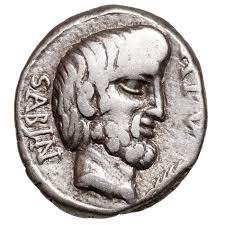
The Sabines launched an attack on Rome, intending to rescue their female captives. However, it was too late, as the Sabine women who were once captives had already developed a strong attachment to their husband captors. Instead of cheering on the prospect of returning home, the Sabine women turned to the front lines, pleading for a reconciliation. Their leader, a woman named Hersilia, who later got married to Romulus, helped stop the war between Rome and the Sabines. According to her, it was important to prevent bloodshed between their fathers and brothers and their new husbands. The Roman historian, Livy, narrated how the women rushed into the fray instead of putting their heads down and waiting for them to come up. Regardless, they pleaded for peace on both sides, and Romulus and Tatius Sabinus readily agreed. The battle was halted, and the Sabines were made Roman citizens.
A truce was finally reached between the Romans and the Sabines, which brought the two nations together. The Sabines were extended an invitation to reside in Rome, and Tatius Sabinus was extended a partial position as a Roman king. After extensive negotiations between the two tribes, tatius decided to accept, and a portion of the Sabine people remained with him in Rome and merged with the Roman nation. The agreement also stipulated that certain Sabine military commanders would be allowed to return to their homeland, except for three individuals, namely Mettius Curtius, Volusus Valerius, and Tallus, who remained in Rome with Tatius.
Titus Tatius devoted his time to overseeing the integration of his people with the Romans, and constructed a palace on the Capitoline hill as his new residence. He and Romulus were initially incredibly compatible when it came to ruling. The enduring bond between the pair was so strong that they even engaged in a conflict with the inhabitants of Cameria, a colony of Alba Longa, akin to Rome. They prevailed over them, leading to the expansion of Rome by an additional 4000 people.
The reign of Romulus and Titus Tatius lasted for a duration of five full years. In the sixth year, however, trouble began to arise. A group of acquaintances of Titus Tatius carried out a search operation on the land belonging to the town of Lavinium. They robbed the people from Lavinia and took their animals. Later, the people from Lavinia wanted justice to be done quickly. They dispatched ambassadors to Rome to ensure that their demands were heard and that the thieves responsible for their theft were punished.
Tatius, despite Romulus’s intention to uphold the law, strictly forbade the arrest and transfer of Roman citizens to face trial in Lavinium. The people of Lavinia were disappointed that they did not receive justice. In addition to leaving without getting justice, the Lavinian ambassadors were attacked, robbed, and some even killed on their way back to their hometown. Romulus, upon learning this, opted to pursue justice for the citizens of Lavinia and directed those who were involved in the murder to proceed to Lavinium for trial. Tatius once again disagreed with Romulus and instead ensured that those responsible for the demise of the Lavinians ambassadors were released before reaching Lavinium.
It’s important to know that Lavinium was more than just a normal town. According to some historians, the town was founded by Aeneas, and its origin is linked to Rome. The connection extended beyond the realm of religion. Several Roman kings performed sacrifices at that location. Tatius Sabinus decided to go to Lavinium to also perform the same ritual rite.
Tatius’s visit to Lavinium was not the ideal occasion for him to visit, as the controversy surrounding his decision to exonerate his men for killing innocent Lavinians was not a favorite among the inhabitants of the city. He did it anyway to fulfil the sacrificial obligation of the ancestors. The Lavinians were aware of Tatius’s upcoming visit, and the surviving ambassador’s friends and relatives would not hesitate to take advantage of this chance to exact revenge. They attacked Tatius right at the altar and immediately killed him.
Dionysius also recounts the account of Licinius Macer, in which Tatius was killed while travelling alone to persuade the victims in Lavinium to forgive the crimes committed. Upon discovering that he had failed to bring the men responsible with him, as per the directive of the Senate and Romulus, a resentful mob executed him with a stone.Thereafter, he was buried on a hill called Aventine in Rome.
The story I’ve presented is based on the writings of Dionysus of Halicarnassus, but other historians, specifically Plutarch and Livy, have credited Lavinium’s part in the tale to Laurentum. Laurentum is a nearby town that is also a significant part of Roman history, as it was the residence of king Latinus, the father-in-law of Aeneas. Despite the assertions of renowned historians such as Plutarch and Livy that the victims of the initial robbery and the ambassadors were from Laurentum, they concur with Dionysus’ assertion that Titus Tatius perished in Lavinium.
Read also: Revealed: The Romans and Europeans are descendants of Esau and Japheth
The news of Tatius’s passing touched Romulus deeply, and he pledged to respond. Even though he disagreed with Tatius about Lavinium, he felt sad when a king from Rome was killed. He requested that the Lavinian assassins be brought to trial in Rome, and they complied with. After listening to their arguments for a while, he decided they weren’t guilty, which was a surprise. After he acknowledged their legitimate motives, they were released.
The outcome of the events resulted in the demise of Titus Tatius, the perpetrators were exonerated, and Romulus was re-established as the only ruler of Rome. What transpired next would become a well-known tale in the history of Rome.
The death of King Romulus and the various theories surrounding it
The demise of Rome’s founder and first king, Romulus, has been the subject of numerous theories. Most scholars agree that he died at the age of 55, following a reign of 37 years, five of which were with Titus Tatius as his peer. Various writers have come to the conclusion that he did not pass away from natural causes, but they do not agree on the actual events. Here are some of the theories regarding the cause of King Romulus’ demise:
1. Murdered by the Roman Senators
The senators of Rome also had grounds to harbour disapproval towards Romulus. It was possible that the king’s behaviour and decisions had a significant impact on the security of Rome. One of these scenarios could potentially involve Romulus’s triumph in the military against Veii, a formidable Etruscan city. In accordance with the customary protocol, Romulus seized fifty hostages from the defeated city. Then, contrary to tradition, Romulus decided to allow the hostages to return home, weakening Rome’s standing in international affairs.
The death of Romulus’s grandfather Numitor aggravated matters, as the Roman king also assumed the throne of Alba Longa. He didn’t become king there, but he gave the power to the Albans and chose a new leader every year. This marked a stark contrast to his own almost dictatorial reign in Rome.
Moreover, in his capacity as a judge, Romulus exhibited a tendency towards extreme strictness and even extreme cruelty. Dionysus also recounts a trial in which he executed a whole group of public office holders accused of bribery by hurling them down the cliff. This was, undoubtedly, not a fitting end for men of noble birth, as they were.
The senators may have decided to take matters into their hands by killing the increasingly oppressive king Romulus. Several historians also suggest that King Romulus’ death may have been attributed to his actions in the Temple of Vulcan, where the Senate convened. After his execution, the king’s body was dismembered. It was reported that, by removing his body from the building, they ensured that the chaos was minimal and soon agreed on a new form of government.
2. Torn apart out of jealousy and marginalization
The Romans fought many battles against nearby towns, and many of the tribes that were defeated joined the Romans and made the city bigger. The Sabines were the largest group to relocate to Rome after the outbreak of war triggered by the infamous “Rape of the Sabine Women”. There were even nominations for seats in the Roman Senate for the Sabine leaders, and their king Titus Tatius was elevated to the throne of Rome alongside Romulus. The assumption could be made that, while Romulus remained the supreme ruler of the “original” Romans, Tatius may have been the most popular choice among the Sabines, who were still relatively new to Rome.
Following the successful assassination of Tatius, Romulus was unable to feel the need to punish the criminals and allowed them to roam freely. This conduct may have contributed to the marginalization of the Sabines as substandard citizens, in favour of the original Romans. The escalating degree of discontent may have resulted in the execution of the king by certain Sabines, which is not surprising.
3. Raised to heaven by the god of Mars
The Roman poet Publius Ovidius Naso (Ovid), in his Metamorphoses, provided us with the most artistic interpretation of the most fantastical version of Romulus’ demise, as cited by historians. According to Ovid, Romulus didn’t die from natural causes, but rather was escorted to the celestial realm by his divine father Mars, where he ascended to the status of a deity named Quirinius. His spouse, Hersilia, followed him shortly thereafter and also achieved the status of a goddess, Hora.
Ovid also asserted that this ascension took place on the Campus Martius, a flat area just outside the Roman walls, where Romulus was responsible for a military procession. As per the narratives of Ovid, a storm erupted, resulting in a gloomy atmosphere and dazzling flashes of lightning. When a dark cloud surrounded the king, Romulus was nowhere to be found. The Romans were skeptical about this bizarre account by Ovid and believed that Romulus might have been murdered by other kings.
In addition to the poetic account of Ovid, a man named Proculus Julius, a long-time associate of Romulus, appeared before the populace and claimed to have witnessed Romulus ascends from the heavens for a brief period. Some believed he was trying to present a vision of the future splendour of Rome. The testimony of Proculus Julius was sufficient, and instead of a civil war, Rome experienced a peaceful period following the demise of Romulus.
Read also: History of Canada: Significant events that led to its Independence
The mythical figure of Romulus, whose attributes encompassed divinity, treachery, and the fictitious musings of ascension, emerged as one of the most popular heroes of the Roman myths. The height of his fame and admiration came during the reign of Augustus, who later claimed to be the second person to establish the city.
The reign of Numa Pompilius and Lucius Tarquinius “Superbus”
When numa Pompilius assumed power from 715 to 673, he was credited with inventing the religious calendar. Other early religious institutions, including the Vestal Virgins, the cults of Mars, Jupiter, and Romulus deified (Quirinius), are also alleged to have been initiated by him. These modifications were, in fact, the outcome of centuries of religious advancement.
According to legend, Numa was a calmer counterpart to Romulus, the more aggressive founder of Rome, whom he succeeded after a year’s gap. It was widely acknowledged within the Roman Republic that he lacked familiarity with Pythagoras, and the 14 philosophical and religious law texts attributed to him in 181 BCE were alleged to have been fabricated. The reign of Numa was followed by five additional kings, the most recent of whom was referred to as Tarquin the proud.
Legend states that Tarquin was responsible for the death of Tullius and the establishment of total despotism. This is the reason for his moniker Superbus, which comes from Latin and means “proud individual.”
During the time when Lucius Tarquin was in power, many senators were killed. A group of senators, led by Lucius Julius Brutus, eventually initiated a revolt against his government. This revolt resulted from the rape committed by Tarquins son, Sextus, against a noble woman, Lucretia. Because of this, in 509 BC, the Tarquin family was kicked out of Rome and the monarchy was also taken away.
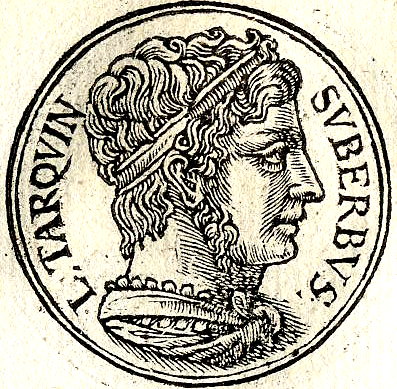
Tarquin, later on, exacted revenge on Rome and sparked a series of rampages against the city by its neighbours. At the Battle of Silva Arsia, Rome triumphed over the Etruscan cities of Caere, Veii, and Tarquinii. Despite his defeat, Tarquin’s appeal to Lars Porsenna of Clusium failed to sway his restoration. Ultimately, he summoned his son-in-law, Octavius Mamilius, a prominent figure in the Latin League, to engage in combat against Rome at Lake Regillus.
After the defeat of the Latins, Tarquin fled to the Greek tyrant Aristodemus of Cumae. The free republic of Rome was established in the sixth century BCE after this.
Sources
Cary (1978), Dionysius of Halicarnassus – The Roman Antiquities
Kline (2000), Ovid – Metamorphoses
Loeb Classical Library edition (1914), Plutarch – Parallel Lives: Life of Romulus
SPILLAN (2006), History of Rome
